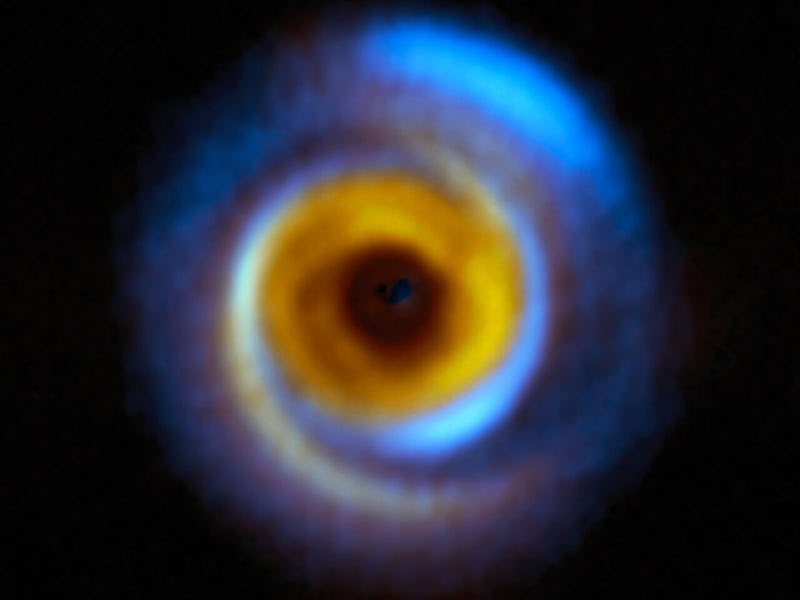Look! This Gas-Rich Cloud Could Be Growing Massive Exoplanets
Exoplanets and their cradles are unique like snowflakes.

Astronomers just got a look at 86 potential cradles of new planets.
Fresh images from sensitive ground-based telescopes in Chile show detailed views of the protoplanetary disks that surround young stars in three nearby regions. According to an announcement published Tuesday by the organization behind the telescopes, the European Southern Observatory, the data shows a diversity of nurseries.
One place they looked was a gas-rich cloud called Orion, located 1,600 light-years from Earth. Here, astronomers found that smaller disks are more common around stars in groups of two or more. The disks generally looked uneven, too, in the Orion cloud. According to ESO, that suggests massive exoplanets were growing within the disks. Their prowess might be warping and misaligning the celestial cocoons.
This is a planet-forming disk, called the MWC 758. It is located about 500 light-years away in the Taurus star-forming region. The image is a composite. It was created from data taken by the Spectro-Polarimetric High-contrast Exoplanet Research (SPHERE) instrument on the European Southern Observatory’s Very Large Telescope (VLT), as well as observations from the Atacama Large Millimeter/submillimeter Array (ALMA).
In another star-forming region called Taurus, located about 600 light-years away, the telescopes rendered both where dust had scattered the light from the young stars and the glow of the dust itself.
The work allows astronomers to notice trends.
“We’ve gone from the intense study of individual star systems to this huge overview of entire star-forming regions,” Christian Ginski, a lecturer at the University of Galway in Ireland, and lead author of one of three new papers published about the imagery, said in ESO’s statement.
Planet-forming disks around young stars and their location within the gas-rich cloud called Chamaeleon I, roughly 600 light-years from Earth.
Scientists from more than 10 countries gathered the observations using ESO’s Very Large Telescope and the Atacama Large Millimeter/submillimeter Array (ALMA), both located in Chile’s Atacama Desert.
A cosmic variety
The exoplanet counter has exceeded 5,000. These worlds and their communities are quite different from one another as well as from our own Solar System. “To understand where and how this diversity arises, astronomers must observe the dust- and gas-rich discs that envelop young stars — the very cradles of planet formation,” ESO officials wrote.
Seeing these planetary birthplaces requires special tools. On top of VLT is mounted SPHERE, or Spectro-Polarimetric High-contrast Exoplanet Research instrument. Its adaptive optics system, designed to correct for interference from Earth’s atmosphere, helped the team produce crisp images of these important locations.
Planet-forming disks around young stars and their locations within Taurus, a gas-rich cloud located 600 light-years from Earth.
This meant the team could “image discs around stars with masses as low as half the mass of the Sun,” ESO officials wrote, “which are typically too faint for most other instruments available today.
The variety of the celestial cribs was very inspiring to the team, as their choice of language suggests.
“Some of these discs show huge spiral arms, presumably driven by the intricate ballet of orbiting planets,” Ginski added.
“It is almost poetic that the processes that mark the start of the journey towards forming planets and ultimately life in our own Solar System should be so beautiful,” Per-Gunnar Valegård, a doctoral student at the University of Amsterdam in the Netherlands, and lead author of the Orion study, said in ESO’s statement.